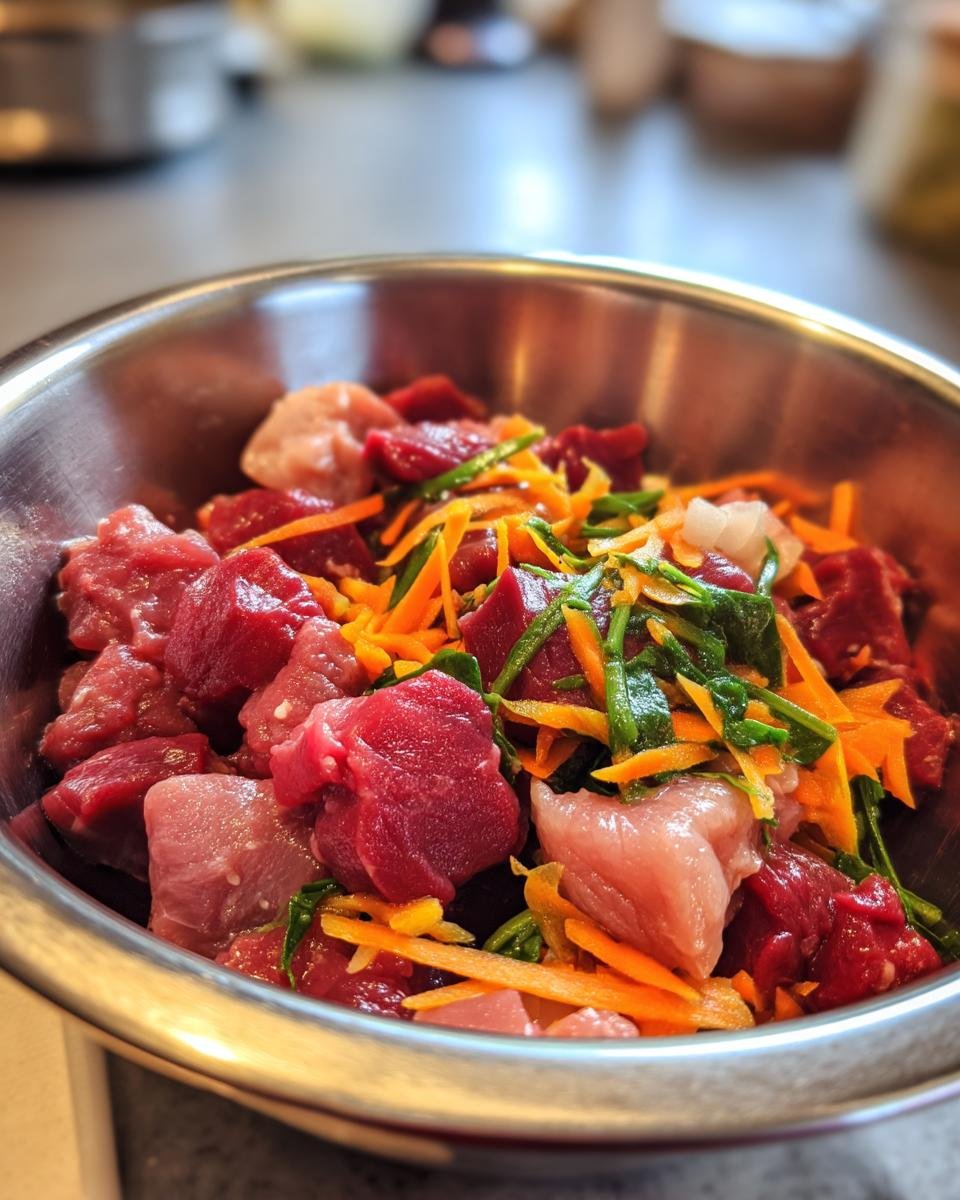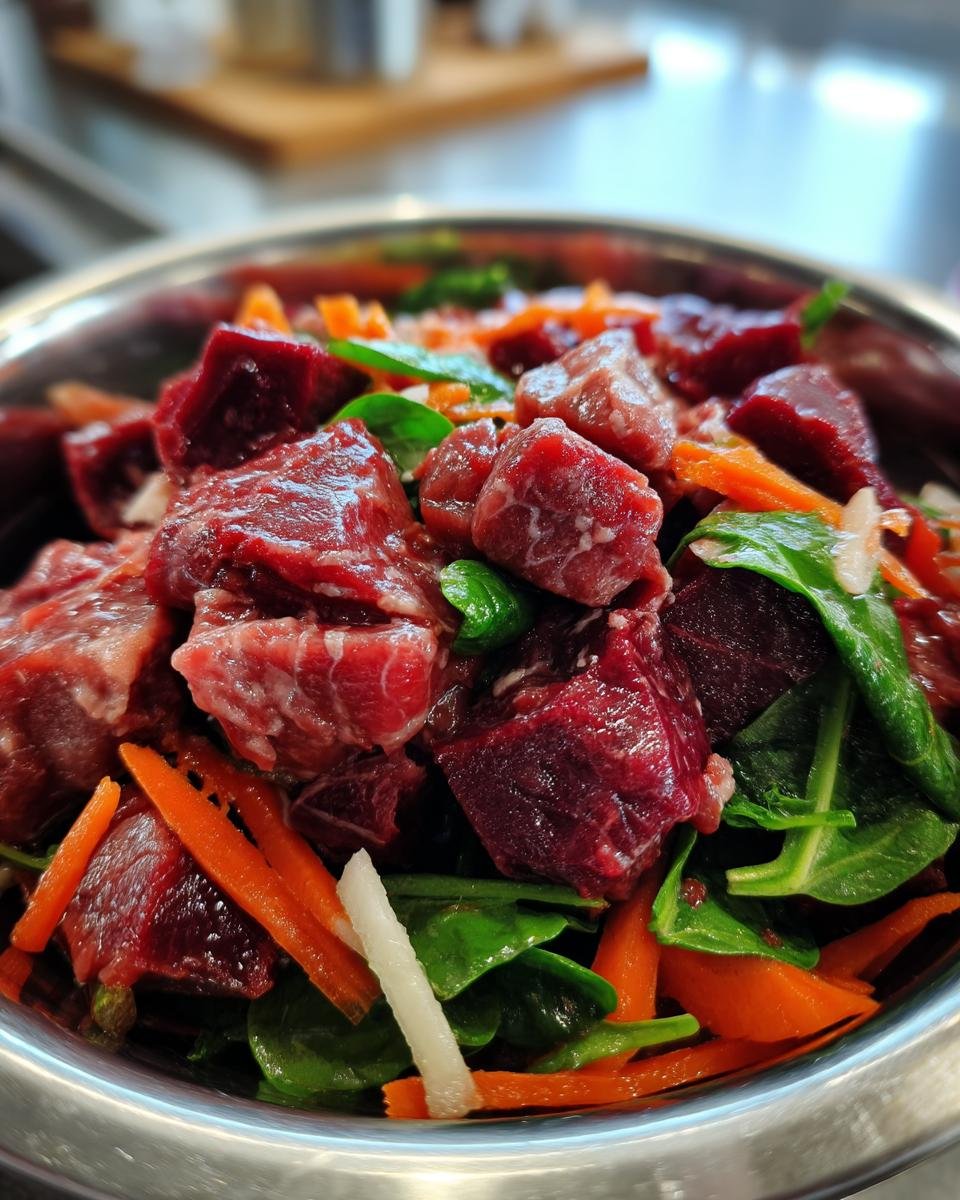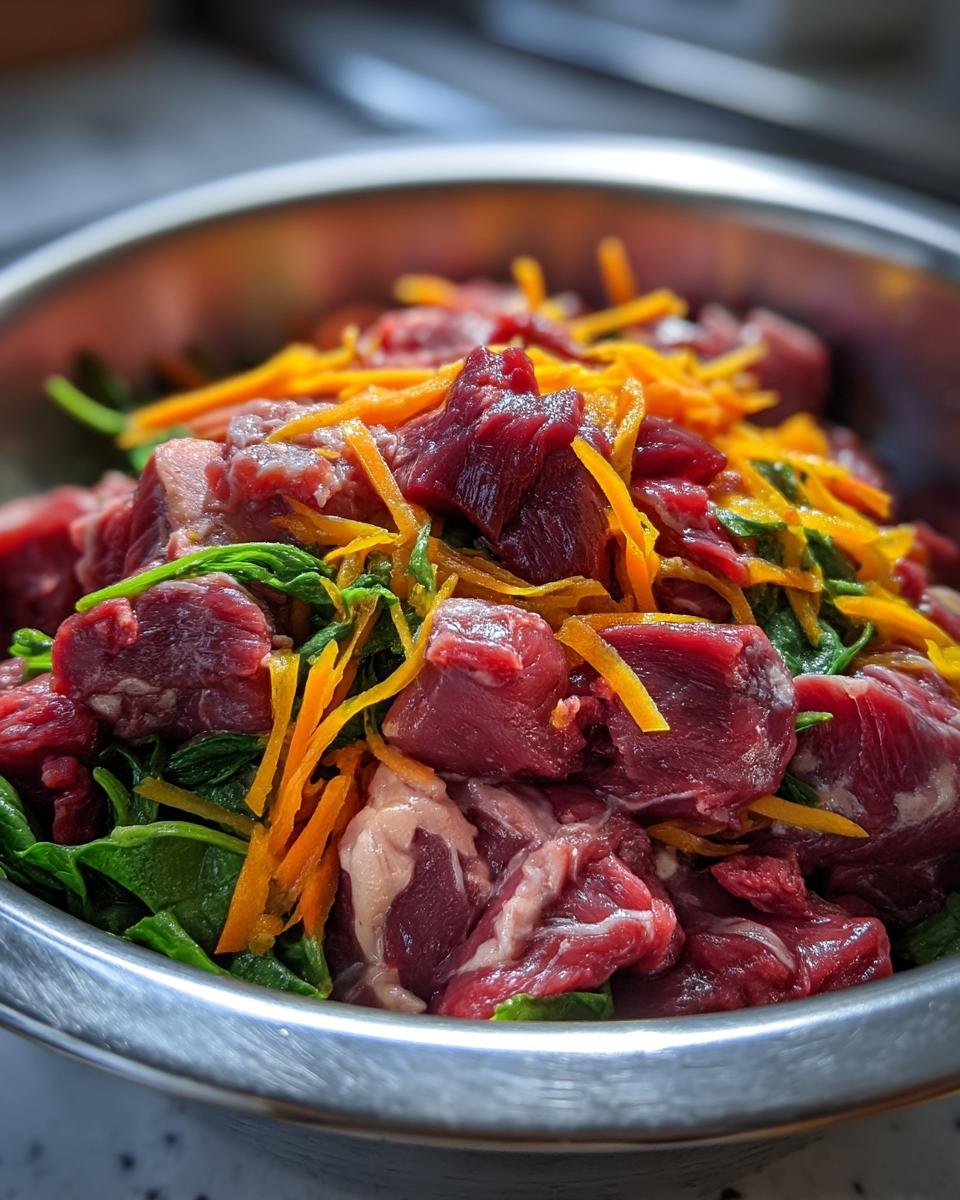When I first started feeding my dog raw meals, I was nervous. There’s so much info out there, and I didn’t want to mess it up. But once I learned the basics of safe raw feeding practices—and got the thumbs-up from our vet—it became second nature. And let me tell you, the difference in my pup’s energy, coat, and digestion? Totally worth the effort.
Safe, balanced nutrition is everything when it comes to raw feeding. It’s not just about tossing some meat in a bowl. You’ve got to get the ratios right—muscle meat, organ meat, bones—and make sure you’re prepping and storing everything safely. I’ve been doing this for years now, with guidance from our vet, and I’m excited to share what’s worked best for us.
This guide will walk you through the essentials so you can feel confident feeding raw—without second-guessing every step. Let’s make your pet’s meals as nourishing (and safe!) as they deserve to be.

Ingredients for Safe Raw Feeding Practices
Alright, let’s break down exactly what goes into a safe, balanced raw meal. I follow the 8 0/10/10 rule that many vets recommend: that’s 80% muscle meat, 10% organ meat, and 10% raw edible bones. Simple, right? For muscle meat, I usually rotate between chicken thighs, beef chunks, and turkey breast—whatever’s freshest and pet-safe. Organs are powerful stuff nutritionally, so I stick with liver and kidney, making sure they’re no more than 10% of the meal.
Raw bones (like ground chicken necks or whole sardines) are great for calcium, but only if they’re safe and edible—never cooked. I also toss in a small handful of veggies or fruit (5–10% max)—think carrots, spinach, or apple slices—but only if my vet says it’s okay for my dog’s needs. And don’t skip the supplements! Things like fish oil, vitamin E, or kelp might be essential depending on your pet’s health.

How to Prepare Raw Meals Using Safe Raw Feeding Practices
Once you’ve got your ingredients ready, it’s time to prep like a pro. First things first—clean everything. I always start by scrubbing down my counters and grabbing a separate set of cutting boards, knives, and bowls just for my dog’s food. Cross-contamination is no joke when dealing with raw meat.
I wear food-safe gloves and portion everything out on a clean surface. I’ll weigh the muscle meat, organs, and bones to hit that 80/10/10 ratio accurately. Then I add in any approved fruits or veggies and stir in vet-recommended supplements. If I’m making a big batch, I portion it into meal-sized containers and pop them straight into the freezer.
Freezing raw meals keeps things safe and fresh—plus, it helps kill off some potential parasites. When it’s time to serve, I thaw a portion in the fridge overnight. Never thaw on the counter—it’s just not safe. And when introducing a new protein or ingredient, I go slow. I mix small amounts into their regular food over 7–10 days and watch for any tummy issues.
After feeding, I toss any uneaten food after 30 minutes and wash the bowl and prep tools with hot, soapy water. Clean, careful steps make all the difference.

Why Safe Raw Feeding Practices Matter for Your Pet’s Health
Feeding raw can do wonders for your pet—shinier coats, healthier teeth, more energy—but only if it’s done safely. I’ve seen firsthand how a balanced, properly handled raw diet can transform a dog’s digestion and vitality. But here’s the thing: safety is non-negotiable. Without it, you risk exposing your pet (and your household!) to harmful bacteria or nutrient imbalances.
My vet always reminds me that dogs and cats may be resilient, but they’re not invincible. Unsafe prep, the wrong ratios, or spoiled meat can lead to serious health issues like salmonella, E. coli, or even nutritional deficiencies over time. That’s why I follow strict hygiene steps and double-check every ingredient. Safe raw feeding isn’t just a best practice—it’s a promise to care for our pets the way they deserve.
Tips for Success with Safe Raw Feeding Practices
Here’s what’s helped me stick with raw feeding without losing my mind—or worrying constantly. First, clean tools are everything. I keep a separate set of bowls, utensils, and cutting boards just for my dog’s meals. That way, I’m not mixing pet prep with people food. I also wash everything with hot, soapy water right after use—no excuses.
Next, rotate proteins. This keeps meals interesting for your pet and helps balance out different nutrients over time. One week it’s turkey, the next it’s beef or rabbit. Variety is key! And don’t forget to track portions and ingredients. I keep a little notebook with what I’ve fed and how my dog reacted—it’s a lifesaver if something doesn’t sit right.
Lastly, trust your vet. I check in regularly to make sure the diet’s still on track. Safe raw feeding isn’t about perfection—it’s about consistency, care, and learning as you go.
Common Questions About Safe Raw Feeding Practices
Can I use raw meat from the grocery store?
Yes—but be picky. I mostly use human-grade meat from stores I trust, and I always check the freshness dates. Grocery store meat can carry more bacteria if it’s been sitting too long, so I freeze it right away if I’m not using it the same day. I avoid anything pre-seasoned or processed. When in doubt, ask your butcher about where it came from.
How do I balance my pet’s nutrition with raw food?
This part stressed me out at first! But the 80/10/10 rule—muscle meat, organs, and bones—is a great foundation. I spoke to my vet and we added supplements like omega-3s and vitamin E to fill in the gaps. Every pet’s needs are different, so it’s worth getting a custom plan from a vet who supports raw feeding.
Are there risks of bacteria or parasites?
There can be, which is why handling matters so much. I freeze all meat before serving to help kill parasites, and I prep everything on clean surfaces with gloves. I also wipe everything down afterward like I just hosted a barbecue for 20. Keeping things cold, clean, and separate reduces risk a ton.
How much should I feed my pet daily?
That depends on their weight, age, and how active they are. In general, I feed about 2–3% of my dog’s body weight per day, split into two meals. I started with a calculator from my vet and adjusted based on how his weight and energy looked over time. Trust your eyes and your scale!
What fruits and vegetables can I include?
I stick with safe stuff like carrots, apples (no seeds!), spinach, blueberries, and pumpkin. Just a small amount—5–10% of the meal max. Never give onions, grapes, raisins, or anything with pits. I always double-check with my vet if I want to try something new, just to play it safe.
Ingredient Substitutions and Notes
One of the things I love about raw feeding is the flexibility—but only when you know what’s safe. If your pet can’t have chicken, go with beef, turkey, or even lamb. I’ve swapped in pork shoulder before too, as long as it’s fresh and unseasoned. For organ meat, if liver isn’t available, kidney or spleen works—just keep it at 10% of the total meal.
When it comes to veggies, kale or zucchini are great stand-ins for spinach. And if apples aren’t a hit, try blueberries or pumpkin. But here’s the biggie: never use onions, garlic, grapes, raisins, or anything with pits. Those can be toxic to pets. When in doubt, I always call my vet before trying something new—it’s just not worth the risk.
Storage and Reheating for Safe Raw Feeding Practices
Once I’ve portioned out my pet’s raw meals, I freeze them in clearly labeled containers with the date and type of protein—trust me, it saves confusion later. I use airtight, food-safe containers or freezer bags to keep things fresh and avoid freezer burn. Raw meals last about 2–3 days in the fridge and up to 3 months in the freezer.
To serve, I move a portion to the fridge the night before. No countertop thawing—too risky. I never reheat raw meals unless directed by my vet (some pets need lightly cooked food), and even then, it’s just a quick warm-up—not fully cooked. Clean hands, clean tools, and clean bowls keep everything safe and tasty.
Nutritional Information
Since raw meals vary based on ingredients and your pet’s portion size, the exact numbers will shift a bit. But here’s a general ballpark per serving, based on a balanced 80/10/10 mix: around 300–500 calories, 20–35g of protein, 15–25g of fat, and minimal carbs (usually under 5g, depending on added veggies or fruit). These are just estimates—I always check with my vet to make sure my dog’s getting exactly what he needs.
Help Other Pet Owners With Safe Raw Feeding Practices
If this raw feeding guide helped you (or your furry friend!), I’d love to hear about it. Leave a comment below with your experience, or share the recipe with fellow pet parents who are curious about going raw. Let’s build a little community of healthy, happy pets—one bowl at a time!
Print
Safe Raw Feeding Practices That Saved My Dog’s Health in 30 Days
- Total Time: 20 minutes
- Yield: Varies based on pet size
- Diet: Low Lactose
Description
Learn how to safely prepare raw meals for your pet with vet-approved guidelines. Focus on balanced nutrition, proper handling, and avoiding harmful ingredients.
Ingredients
- 80% muscle meat (chicken, beef, turkey)
- 10% organ meat (liver, kidney)
- 10% raw edible bones (ground or whole)
- Optional: 5-10% vegetables/fruits (carrots, apples, spinach)
- Supplements as recommended by your vet
Instructions
- Consult your veterinarian to determine nutritional needs
- Source fresh, human-grade meats from trusted suppliers
- Prepare meals using clean surfaces and separate tools
- Handle raw ingredients with food-safe gloves
- Introduce new foods gradually over 7-10 days
- Store portions in freezer and thaw before serving
Notes
- Wash hands thoroughly after handling raw meat
- Avoid processed meats and seasoning
- Discard uneaten food within 30 minutes
- Regularly clean food bowls with hot soapy water
- Prep Time: 20 minutes
- Cook Time: N/A
- Category: Pet Food
- Method: Raw
- Cuisine: Pet Food
Nutrition
- Serving Size: Based on pet's weight and activity level
- Calories: Varies
- Sugar: 0g
- Sodium: Varies
- Fat: Varies
- Saturated Fat: Varies
- Unsaturated Fat: Varies
- Trans Fat: 0g
- Carbohydrates: Varies
- Fiber: Varies
- Protein: Varies
- Cholesterol: Varies

